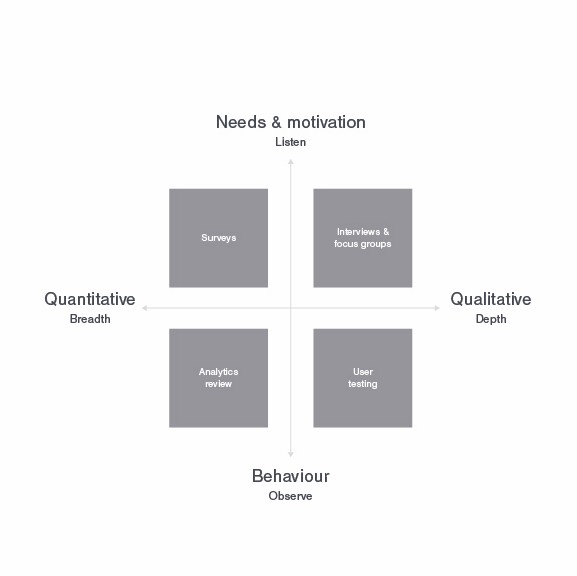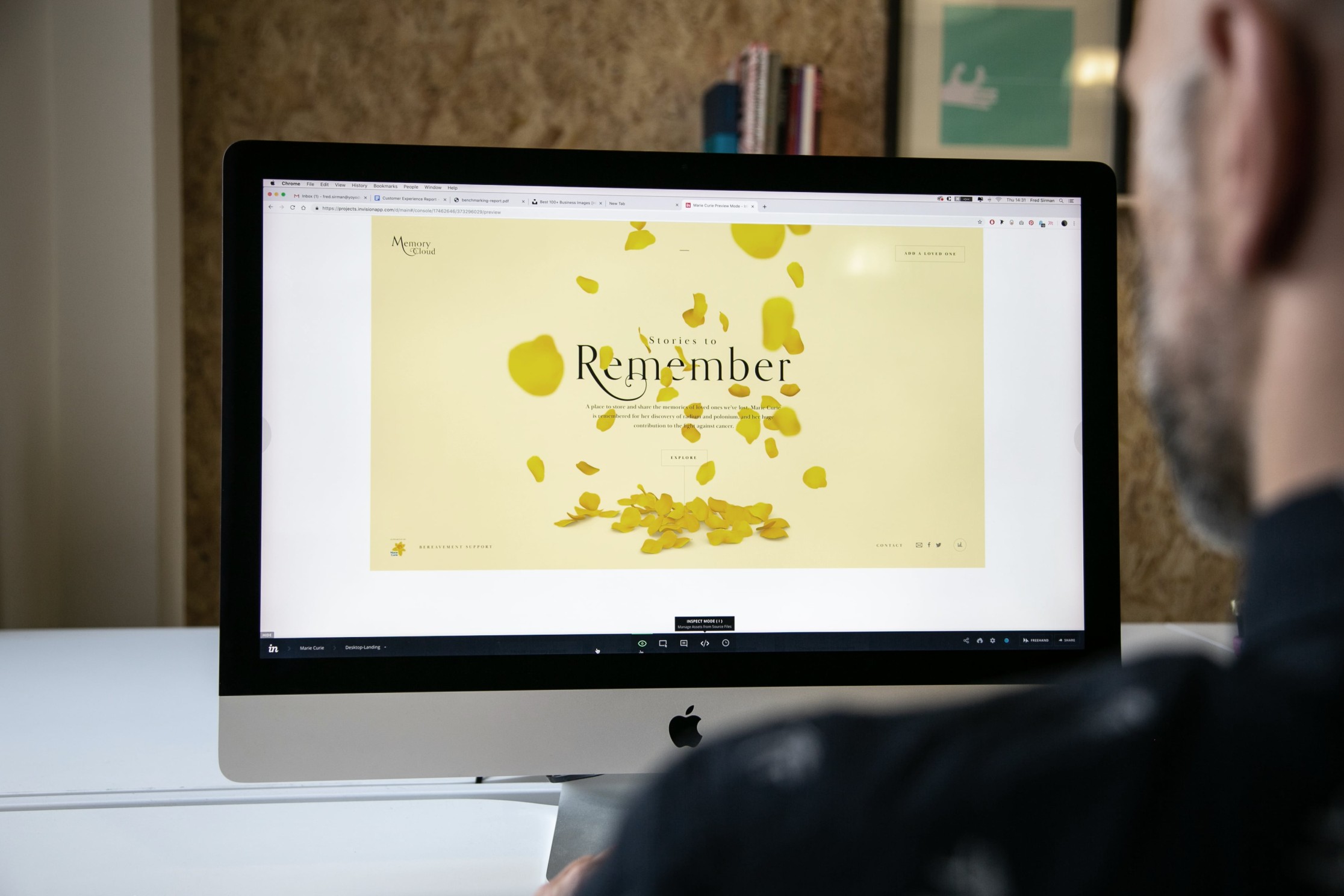Creating an impactful online experience demands in-depth knowledge of your audience. In this article, I reflect on the four key audience research methods we use to shape and optimise digital products and campaigns.
What do you want to achieve?
When you’re shaping a new digital experience, you need to be really clear on the objective. It’s only natural to want everything: from increased awareness and lead generation to a higher conversion rate and greater loyalty. But when there’s a limit to the time and budget, there’s a need to focus.
Once you’ve prioritised what you want to achieve, it then becomes a matter of matching your goals with empathy for what that means to your user or customer. What’s in it for them?
When people are more savvy, flighty, cynical and distracted than ever before, your value proposition needs to speak to them in their language. For this, we need data and insight.
Getting the right data
Quantitative research gives you data you can measure. It is invaluable when you need to assess performance, identify potential problems and opportunities, or test hypotheses and alternative designs. It is fundamental to being able to optimise digital experiences.
Interpreting that data in the right way can sometimes be a challenge though, and if you’re creating a new experience from scratch, reliable data to inform decisions simply might not be available.
When you need to tap into emotions and tell an engaging story that prompts a reaction, you’ll often need more than just numbers and graphs.
To truly understand your audience, you need to be having conversations that build an understanding of their needs and motivations. It’s also important to observe actual behaviour because people do not always do as they say.
This qualitative investigation allows you to explore, deviating from scripts and convention to gain insights you may not have otherwise found.
Finding balance
With so many different research methods, choosing the right approach can become overwhelming. To keep things simple, we’ve created this quadrant to summarise the four key methods (beyond desk research) that we like to use at Yoyo to help us build a clear picture of the audience we are trying to target.

This helps us position the value of core research methods. It is purposefully simplified. Surveys can provide great qualitative data, but if that’s your main goal then interviews or a focus group are likely to be more insightful since you can explore and dig deeper with the questions. Remote user testing can provide quantitative insight – but we find most value when you have the opportunity to observe individual users. You can understand why they are behaving in certain ways by encouraging them to talk through their thought process – something you don’t get if you’re just looking at task completion rates. After all, a very well referenced and long-standing research study identified that you only need to run tests with 5 users to uncover 85% of usability issues.
To be truly user-centric and ensure that you are not overly prone to bias or subjectivity, you need to be regularly gathering insight from all four of these methods. An e-commerce site, for example, should incorporate post-purchase surveys and regular reviews of analytics and sales data; complemented by a schedule of periodic interviews and user testing to enable continued optimisation.
Starting from scratch
If you are building something new, you may not have anything relevant to gain behavioural data from. It is crucial to get behavioural insight as soon as possible to understand if you’re on the right track. This is why we favour getting a design prototype or minimum viable product (MVP) into the hands of users as quickly as possible so you are able to begin testing, learning and refining.
It’s the approach we took with Marie Curie in our recent Memory Cloud project. We initially used interviews and desk research to understand how people grieve and how we could create a digital product to help them in the grieving process. We then scoped our ideas down to the real core functionality that resonated most with the target audience This MVP enables them to create an online tribute page for a lost loved one. It’s not an MVP in the traditional sense of bare-bones functionality and limited design, because the insight showed us that when you’re creating a tribute to someone who has died, you want it to feel special.
This MVP enables Marie Curie to test the assumptions we formed, understand how people actually use it and ask what else they’d like to see.

Whatever method you’re following, you need to establish very clear research questions that you’re seeking to answer.
Here are a few examples for each of the four main areas:
Surveys: Set of questions to a larger subset of users
Interviews and focus groups: Focused conversations to build a detailed understanding
Analytics review: Review of website analytics (e.g. Google Analytics and Hotjar) and sales & marketing data
User testing: Testing the functionality of a website or product by observing users’ attempts to complete tasks on it
Maximum impact
The ideal scenario is a regular flow of data and insights from each of these 4 areas to help inform your decision making, ensuring the digital experience you are offering to your audience has maximum impact for your business.
How do you understand your audience? Do you agree with the four key areas we’ve identified? Are some methods more important or effective than others?